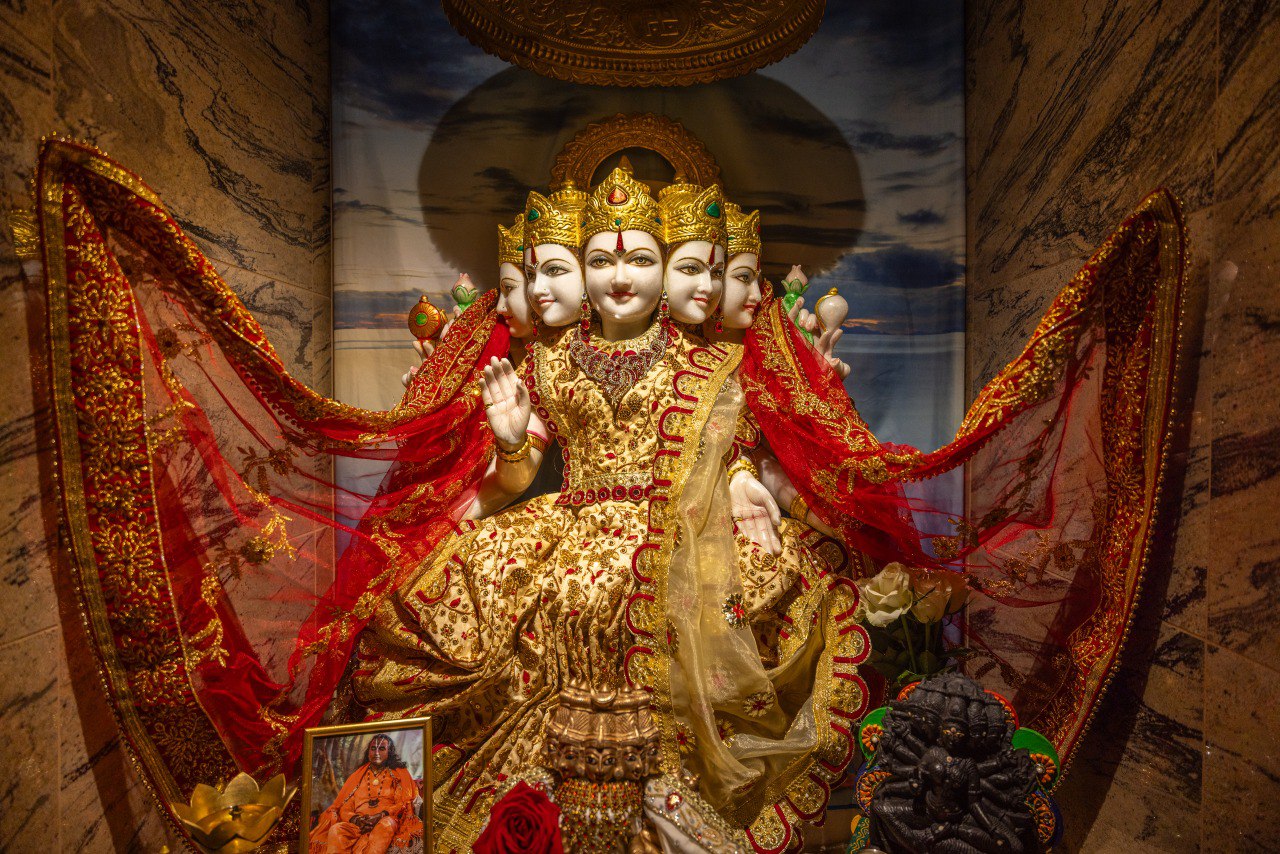
GAYATRI-DEVI´S LILAS
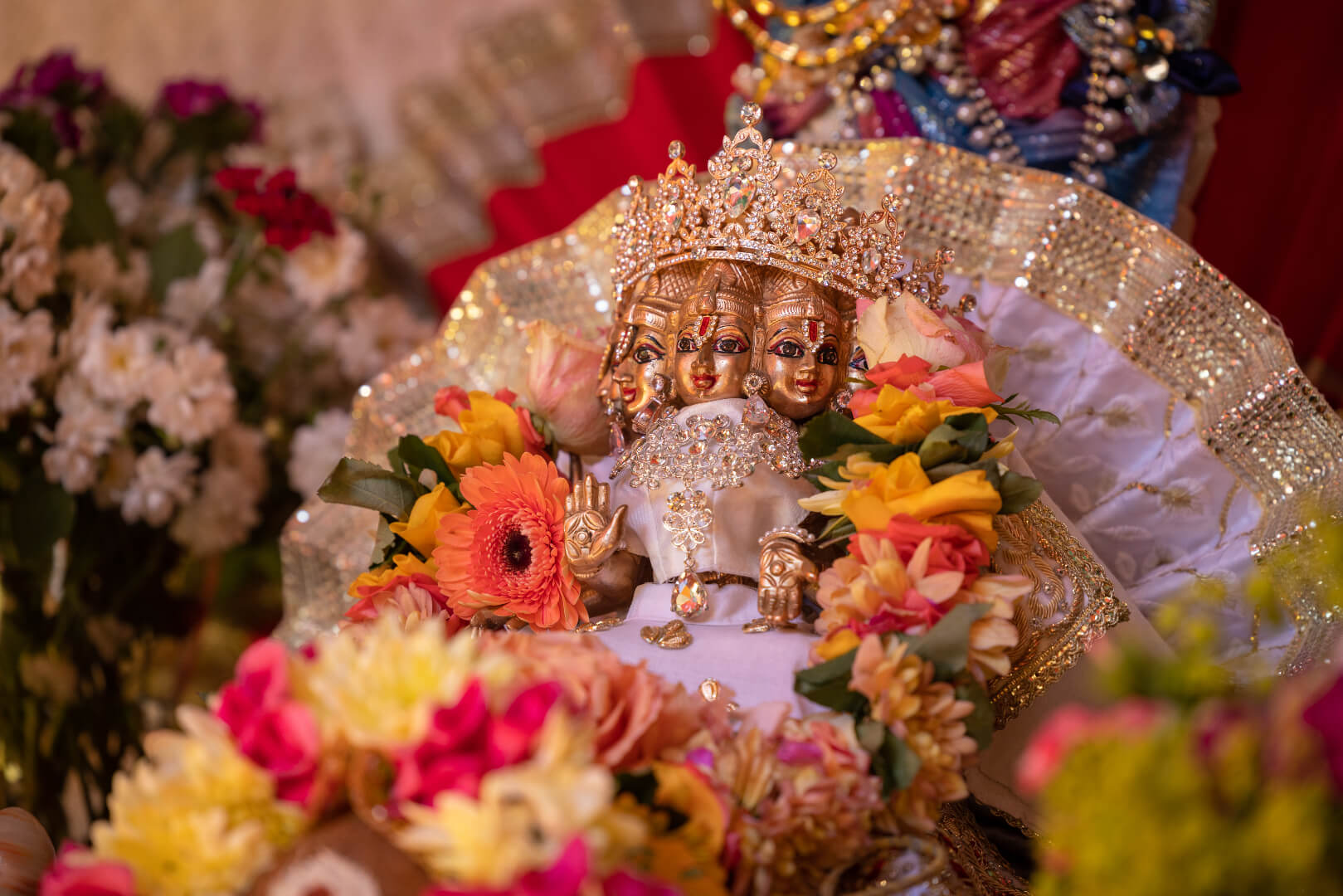
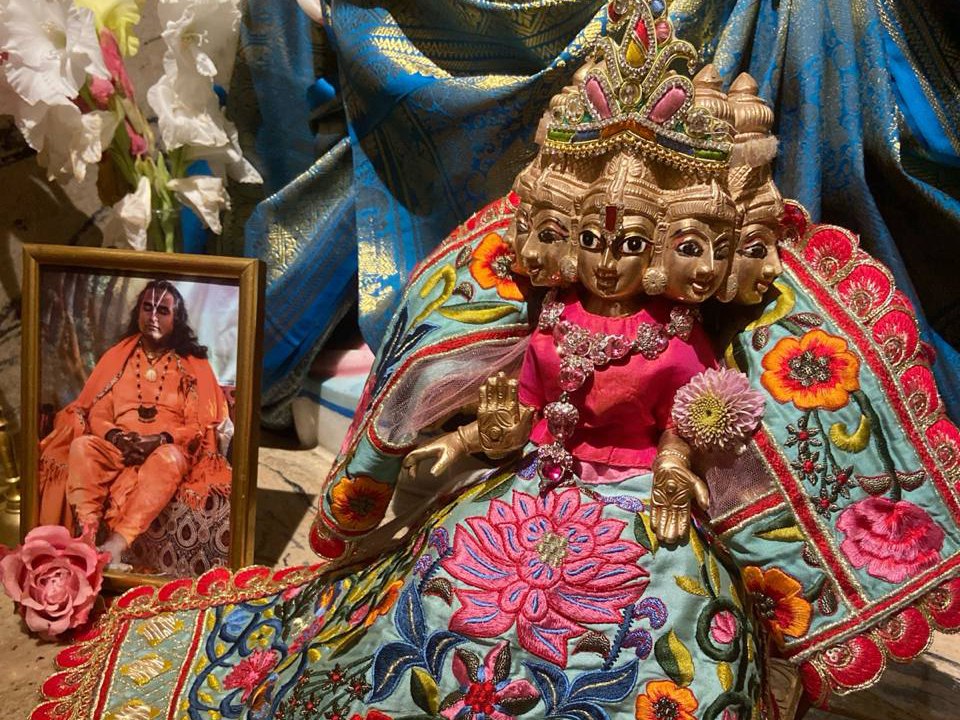
The Bitter-Sweet Transformation of a Devotee
“I first heard about Guruji 15 years ago while staying for three weeks at Satya Sai Baba’s āśrama in India. I visited the āśrama because many people in my spiritual group had been there, and I wanted to experience it myself. During my stay, I often had lunch with a man from Spain who had followed Satya Sai Baba for years. One day, he asked, “Did you know the new Yogananda is in Germany?”. Curious, I asked who he meant, and he told me about Swami Vishwananda. I looked Swami Vishwananda up online, and when I saw His photo, I clearly heard a voice say three times, “This is your Guru”. In that moment, I knew I had to meet Him.
Back in Germany, I signed up for a Darshan and traveled to Munich. During the event, I silently wished for a personal interview and at some point, Guruji called me to assist Him by offering the flower and candy. Afterward, He invited me for the interview. I sat with Him, and He allowed me to stay for a while.”
Akshajananda was deeply moved when he saw Guruji for the first time. Soon after, he booked another interview and later visited the āśrama. There, Guruji made him a ring, which he still has today. Akshajananda began visiting the āśrama every two months, and his connection with Guruji grew stronger. In 2014, Guruji asked him to stay, and Akshajananda moved in.
“One Guru often leads to another—and that’s exactly how I found my way to bhakti-yoga. I started out in a meditation group that followed a jñāna-yoga, the path of knowledge. It focused on discussion and meditation, with no devotional practices. Later, I learned that Guruji placed great importance on rituals.
As time went on, I received my spiritual name, and after moving to the āśrama, I was initiated as a brahmacārī. It felt like a natural next step—a way to deepen my connection with Guruji.
My iṣṭadeva, the personal deity Guruji assigned to me, was Gaṇeśa. I already had a small Gaṇeśa mūrti at home and began doing simple pūjā in my room—my first steps into devotional practice.
When the main temple opened, seven years ago, I was asked if I’d like to serve Gāyatrī-devī. I said yes right away—and I’ve been serving Her ever since.”
One of Guruji’s teachings left a deep impression on him: divine love is bitter at first and sweet later, whereas human love is sweet at first and bitter in the end. He came to see this principle reflected in his own journey with pūjā. At first, the “bitterness” came from the discipline it demanded. He didn’t fully understand the meaning behind the rituals; he simply followed them because Guruji had asked him to.
In the early days, he was taking on six or seven shifts each week. It was demanding, and pūjā often felt like an obligation rather than a joy. Without a deeper grasp of its spiritual essence, his mind would frequently resist.
“In the beginning, it wasn’t easy to get up and go through all the steps of pūjā. The actions themselves were simple, but my mind often resisted. It truly required effort and discipline. I remember thinking, “Let’s see what happens.” I was curious to see whether it would really shift from bitter to sweet, just as Guruji had said.
Still, I found moments of joy—especially in meditating on the deity before and after pūjā. I would visualize Gāyatrī-devī in my heart, and I could distinctly feel something powerful arising from within and spreading throughout my entire body.
Over the past seven years, it’s this meditation that has deepened the most. I came to understand that when I visualize Gāyatrī-devī in the heart, I’m setting a saṅkalpa —an inner intention. That intention gathers and focuses divine energy, allowing it to flow throughout the body.
For a long time, I held on to Her image too tightly, trying to keep it perfectly fixed. Gradually, I realized I didn’t need to hold Her with tension. Instead, I could let Her rest gently in my heart—as if She were lying on soft cotton. That softness, that ease, is what allows Her energy to flow—within me and out into the world.”
Over time, he started to feel a change inside. He realized that divine energy was not just for going deep within but also meant to flow out—from the heart into the world. The light he received wasn’t only for him. It was something to be shared with others, freely and with love.
This understanding showed him the true meaning of sevā —selfless service. When he helped others, he felt he was also serving God, who lives in every person. This change didn’t happen because of one big event. It was a slow, deep shift that changed how he saw the world.
He became more open and more willing to talk with people. He saw how important it was to connect with others, not just look inside. For him, it became a mission—to share the light he had found with the world.
“I understood that when we share divine light, we don’t need to think too much about it. Just do the practice, and the light will flow on its own. At the same time, a slow change happens inside, and over time, we begin to understand what it really means.
I had a personal experience that helped me see this more clearly. During our last trip to Vṛndāvan, we stopped at Rādhā-kuṇḍa. While we were there, a young girl came up to me, begging for money. She was very emotional and even held my arm. At first, I didn’t plan to give her anything, but her strong feeling touched my heart, and in the end, I gave her something.
Later, I stood by the water. The lights were soft, and the place felt peaceful. In that moment, I felt a special kind of happiness. Since that day, every time I do the evening Śayana-āratī to Gāyatrī-devī, my heart remembers Rādhā-kuṇḍa. A deep feeling for the Divine Mother rises in me—something I now feel is connected to Rādhā herself.
That simple act continues to open my heart, again and again.”
Akshajananda never spoke to Guruji about what happened at Rādhā-kuṇḍa, but after that moment, Guruji gave him a look that felt different—like something deep had been silently shared.
What he felt during āratī was a new kind of emotion—a spiritual feeling he had never known before. It seemed like a gift from the Divine Mother, from Rādhā, or maybe through Guruji’s blessing. He didn’t fully understand how it worked, but he accepted it as grace—perhaps the result of many years of doing Gāyatrī-devī pūjā.
This experience also brought up a deeper question—one that many pūjārīs might ask themselves: “I serve the deities and follow the path, but is it really changing me?”
In the best way, a pūjārī serves without thinking of themselves, focusing only on the deity. But being human, Akshajananda sometimes wondered, “Is this practice purifying me? Am I truly growing?” Even though selfless service was the goal, he quietly hoped that something inside him was also being transformed.
“Do I feel any change after all these years? Yes—I absolutely do. The most significant change is that I no longer rely on discipline. In the beginning, it took real effort and persistence. Now, it feels completely natural. That’s exactly how it became sweeter—the struggle has fallen away.
The bhāva I’ve experienced has also changed me. I feel a much stronger connection to the Divine Mother now. There’s a greater sense of joy, simply because I’m no longer forcing anything. It just flows—effortlessly and with ease. So yes, it’s far sweeter now than it was seven years ago.”
Akshajananda doesn’t have big visions of Gāyatrī-devī, but he often dreams about Guruji. He understands these dreams as Guruji’s way of talking to him—sending clear messages or gentle warnings while he sleeps. He trusts these dreams because he believes no one sees Guruji in a dream unless Guruji wants it.
Once, after giving a satsaṅga at the temple that caused some disagreement, Akshajananda thought seriously about stopping. That night, Guruji came to him in a dream and clearly said, “You must continue giving satsaṅga.”
Another time, feeling very discouraged, he quietly told Gāyatrī-devī during pūjā that he thought his life was a failure. The very next day, Guruji asked him to help carry His belongings. Akshajananda saw this as no accident. He strongly believes that when he prays to Gāyatrī-devī, Guruji listens. But he also knows that if his heart is not sincere, Guruji stays quiet.
For him, Gāyatrī-devī is like a living bridge between himself and Guruji.
Through Gāyatrī-devī, his prayers reach Guruji. Through Guruji, he gets the answers. What began as a simple pūjā in a small room has grown into a path full of inner change, gentle help, and strong trust. Now, he does not wonder if the path will get better with time—he feels the happiness in it now. What once felt hard has become love and devotion and the hard times at the start have changed into calm joy
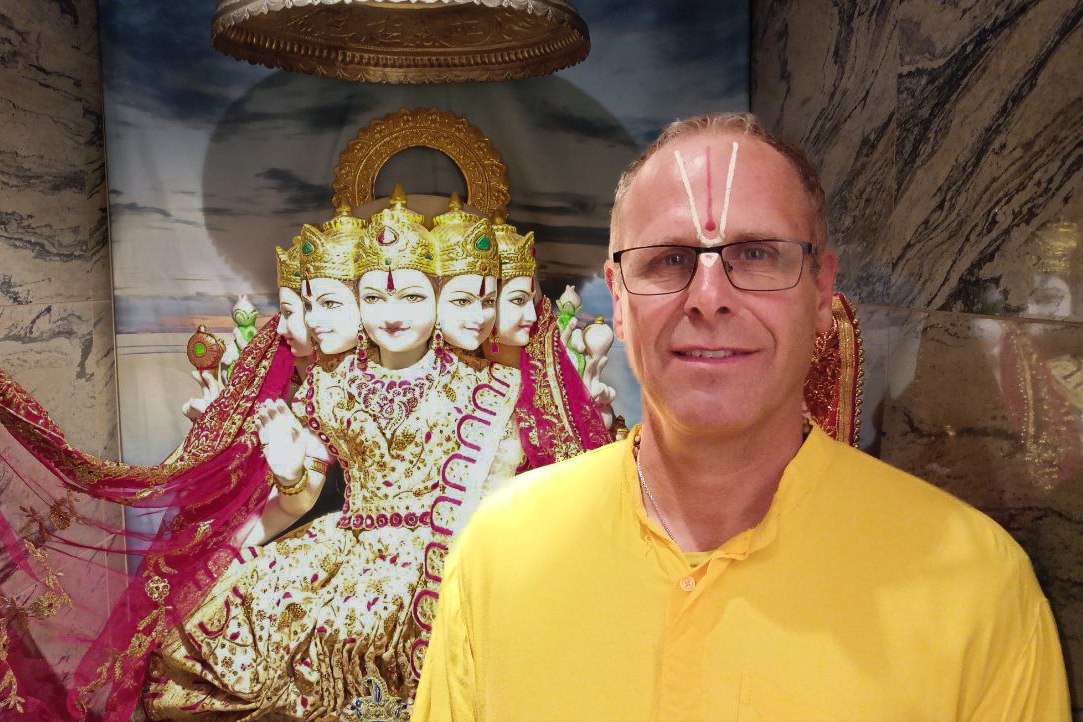
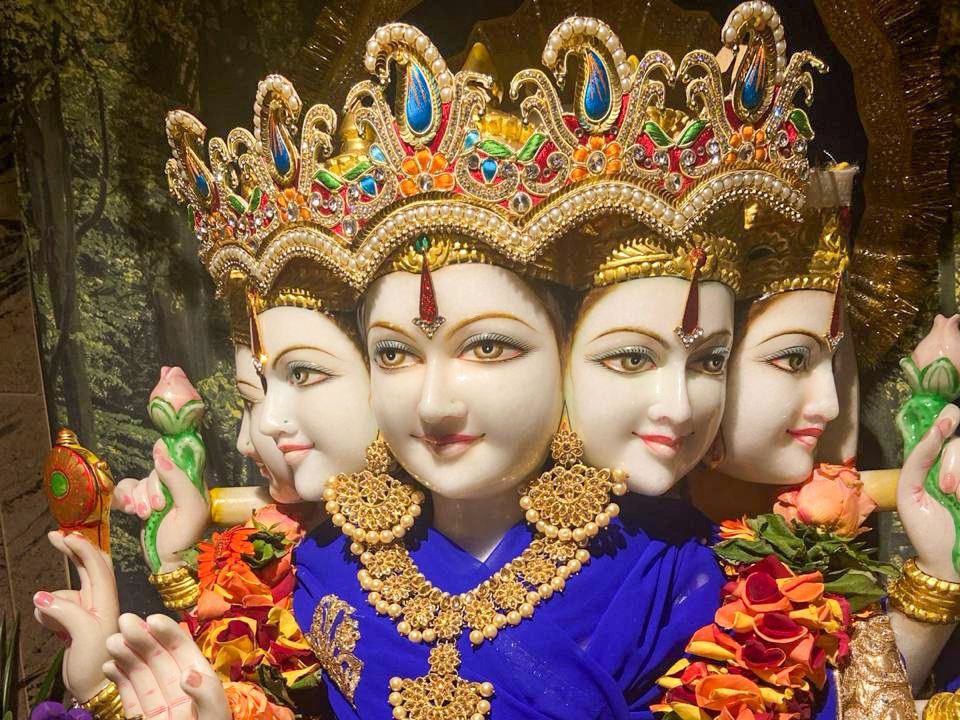
Between Two Worlds
Purusottam’s spiritual path began with two important moments: meeting Guruji as a child and later choosing the spiritual life for himself. He met Guruji around age six, when his mom was visiting Steffenshof. At first, he liked playing more than spirituality, but over time he learned about Guruji, the deities, and the teachings. Guruji said he was already a devotee before it became official at the age of 19.
“After I finished high school, I came to SPN when I was about 20 years old. At that time, prayers were still held in a small temple. Just six months later, I became a resident. I watched the new temple being built, and it was amazing to see it come to life.
Around that time, I took the brahmacārī vow. This means I made a serious commitment to live a spiritual life with discipline.
When the new temple was finished, I started serving Gaura-Nitai and doing pūjā for about one or two years. Later, I began studying Classical Indology at university. I stopped doing pūjā so I could focus on my studies.
Life felt very different between the two places. At SPN, life was spiritual, with rituals and discipline. At university, most people didn’t know or care about my spiritual path. That big difference helped me see more clearly what I really wanted, and what it truly means to be a brahmacārī.”
One important moment in Purusottam’s journey was when Guruji told him to start serving Gāyatrī-devī. At the time, he was spending four days a week at university and two or three days at SPN. He always made sure to do pūjā at least once a week. Worshipping Gāyatrī-devī felt like pressing a reset button—it gave him a fresh start, helping him feel clear and strong for the week ahead.
Guruji never explained why he chose Gāyatrī-devī for Purusottam, but one day, Purusottam had a very clear and powerful dream of Her. This dream made his connection with Her even deeper. Later, when he thought about giving away some of his many Śāligrāma, he asked Guruji which ones he should keep. Guruji chose Gāyatrī-devī`s Śāligrāma and one other.
Gāyatrī-devī is not his iṣṭadeva, but She has always been a peaceful and steady presence in his life. As the mother of the Vedas, She also connects to his studies. To Purusottam, Gāyatrī-devī feels like a gentle, creative, and cosmic mother—a calm, loving guide who helps him learn and create. Serving Her has given him a steady rhythm of devotion that supports both his spiritual path and his university life.
“My spiritual journey has mostly been quiet—not dramatic or intense. Sometimes, Guruji gives me direct guidance. Other times, He lets me learn and find my own way. Our connection has grown over the years. As a child, it felt distant, but once I started to take the path seriously, it became clear and meaningful. Looking back, even when I wasn’t fully following the teachings as a teenager, I can now see that Guruji was always guiding me in His own quiet way.
As a pūjāri, I remember how kind and patient He was with me—even though He is known to be very strict about rituals. One morning, after a 24h Gāyatrī-devī Yajña, I made many mistakes during abhiṣekam, but He didn’t scold me. He just corrected me calmly and gently. Another time, when I was dressing Gāyatrī-devī in Her pajamas, He noticed I was too close to the oil lamp and softly reminded me to be careful.
In my daily spiritual practice, the Gāyatrī-devī Śāligrāma is very special to me. For the past five or six years, I have done abhiṣekam every day to stay connected. I’ve learned how to do the rituals, but what touches me most about Gāyatrī-devī is Her connection to knowledge. That’s the path I follow—one that grows through both spiritual practice and study.”
University was sometimes challenging for Purusottam. Studying Indology meant he had to question everything, even his own beliefs. But over time, he learned how to respect Hinduism while also thinking deeply about it. He found a balance between devotion and critical thinking.
At university, he only shared his spiritual side with a few people. Most students—even those from Hindu backgrounds—focused only on academics. This helped him see how wide and diverse Hinduism really is. There are many different ways people connect with it.
Over time, he started letting go of his perfectionism. He learned to stay focused and enjoy the service, even when there was pressure. The deities always met him with peace and compassion—never with judgment—even in his hardest moments.
Even so, he always valued his quiet pūjā corner—a small, hidden space where he could worship Gāyatrī-devī alone. That private time felt special and full of mystery. For him, pūjā wasn’t about asking for things. It was about spending real time with Her—chanting, being present, and feeling close. Still, during hard times—especially exams—he did pray to Her for help.
“When I felt overwhelmed while working on my master’s thesis, I prayed to Gāyatrī-devī for support. That helped me keep going. Later, when Guruji read my finished thesis and said He liked it, it really meant a lot to me.
But beyond all the studies and academic work, Gāyatrī-devī opened up a deep inner world for me. She feels like a quiet, mysterious presence—always there, walking beside me, just beyond what I can fully see.
My journey has shown me that steady faith and quiet devotion can carry you through a lot. Balancing studies and spiritual life isn’t always easy, but with Gāyatrī-devī and Guruji by my side, I keep moving forward and sometimes, it’s the small, gentle moments that give me the most strength.”
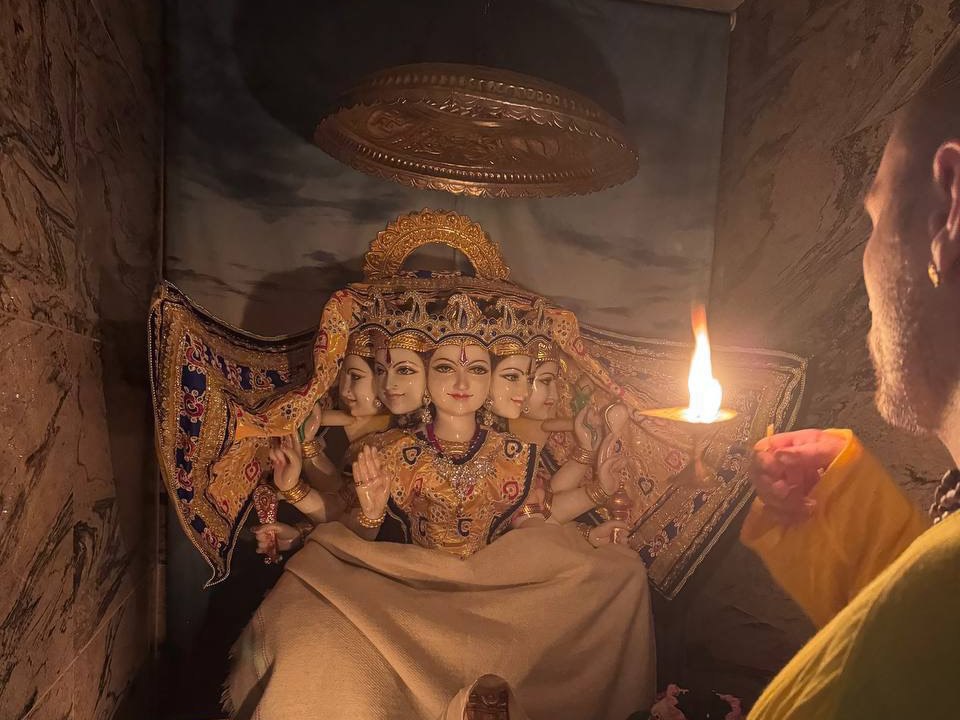
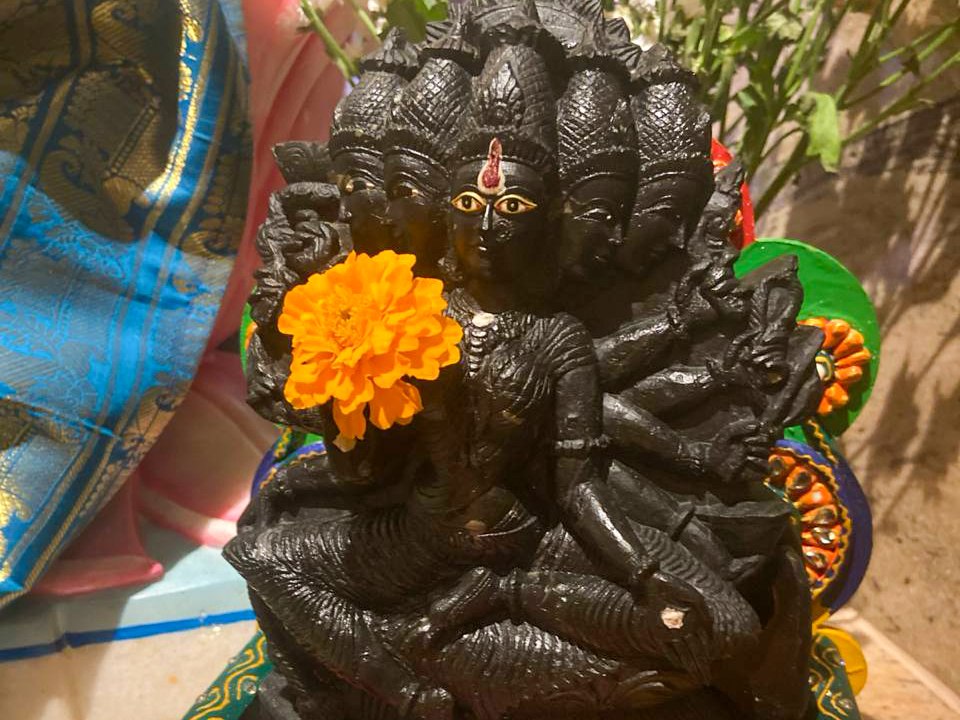
Serve those who serve us all!
Bhutabhrteshwarnath Mandir is a place where we come together to pray and grow in our spiritual journeys. The rituals and prayers help us feel closer to the Divine and remind us of our faith. If you feel a calling to deepen your relationship with the Divine, one way to do this is to support our temple. Join our donation program with the link below and help us continue the wonderful work of our beloved Gurudev. Together we can spread the grace of the Lord and bring more positivity to the world!
“By this, may you nurture the gods, and in return the gods will nurture you. In this way, nurturing one another, you will obtain the highest good.” Bhagavad Gita, Chapter 3, Verse 11
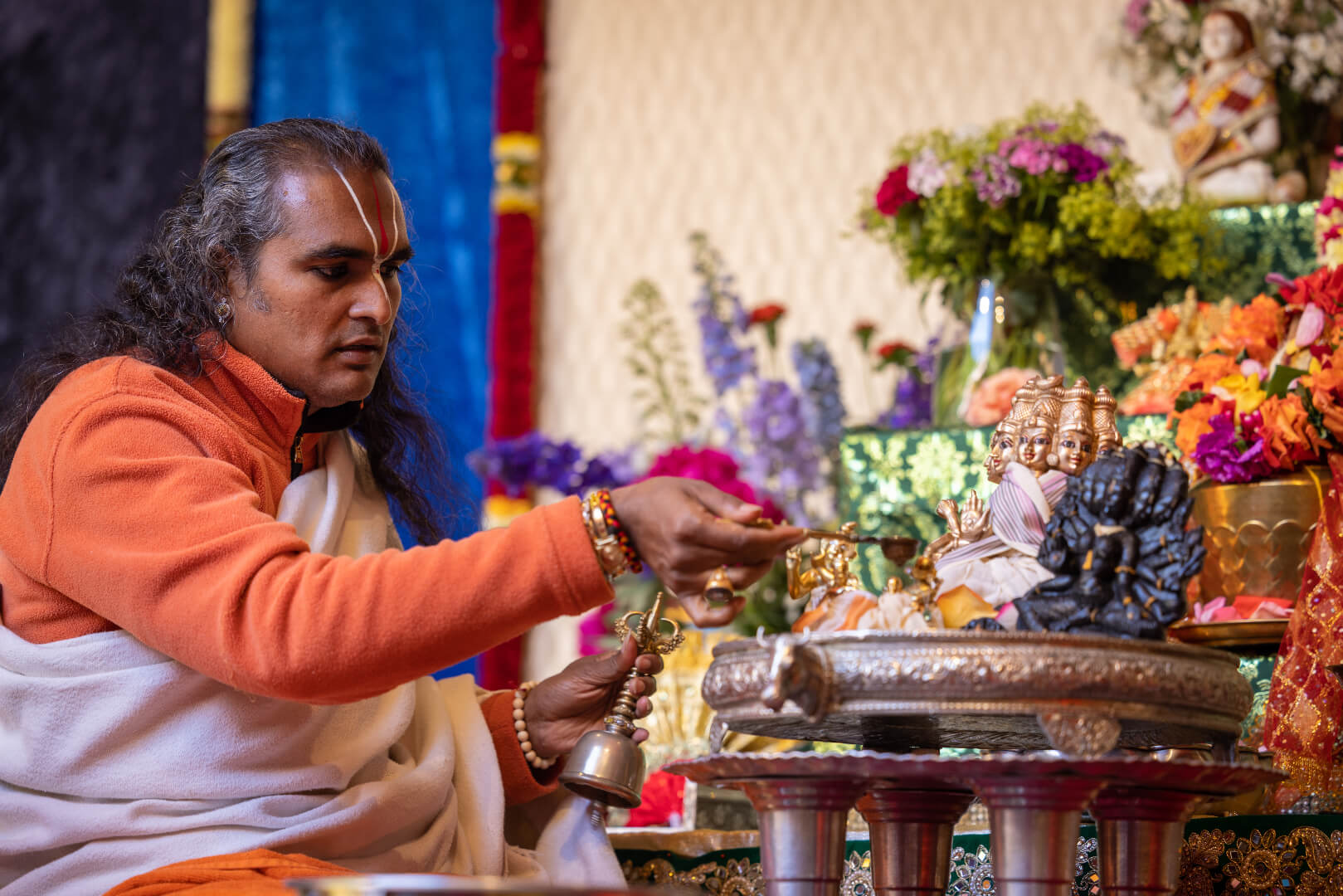
Rewatch Guruji`s beautiful Satsang:

“Why is the Divine Mother so revered? Because the endless Prem that She has for Bhagavan is Her only state of being. She alone carries that highest state in full measure.”
All Blog Posts
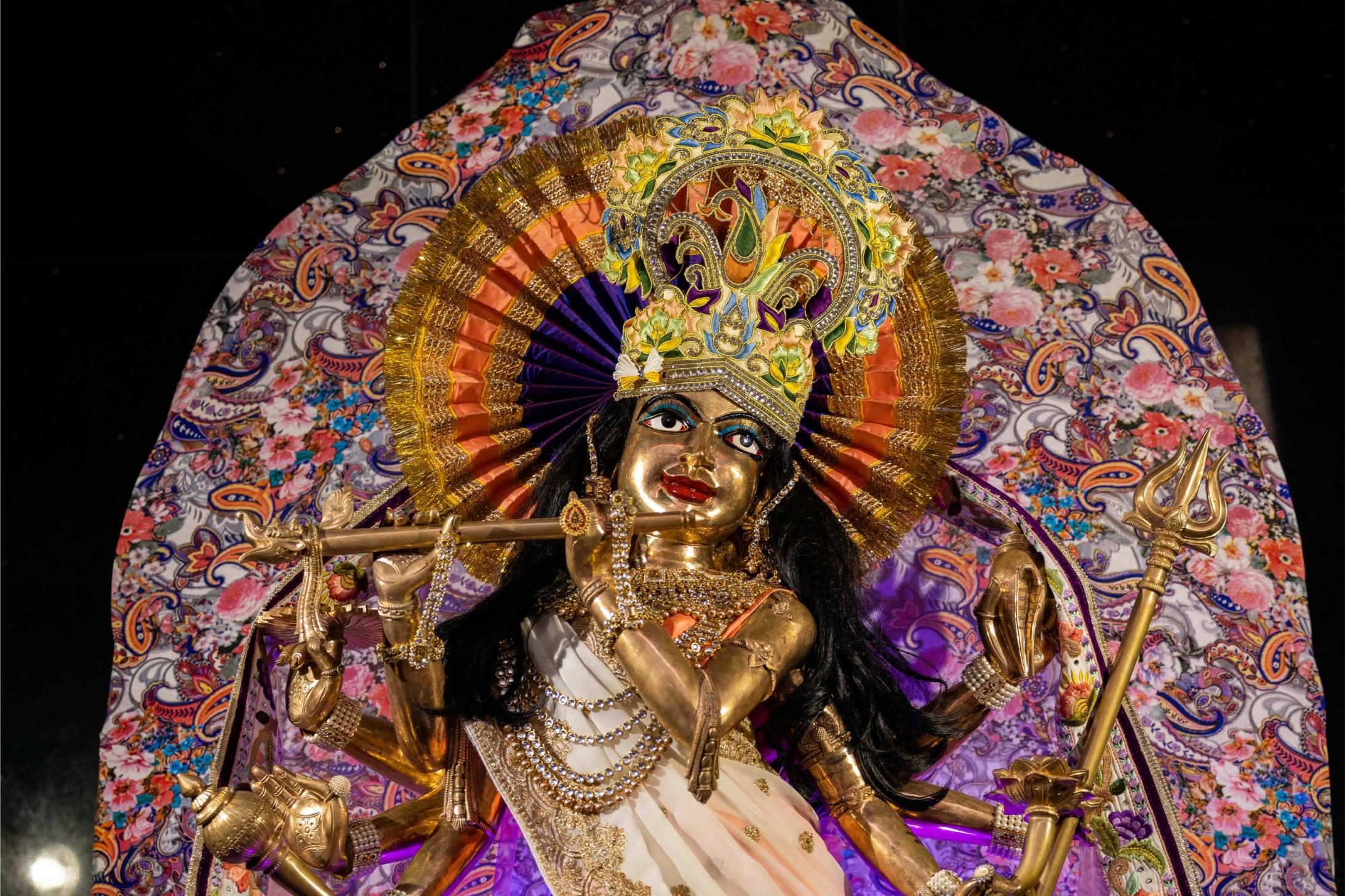
Radha Durga’s Lilas
Rādhā-Durgā is a rare and mystical form, worshipped for the first time as a divine manifestation of Rādhā appearing as Durgā.
January 2026
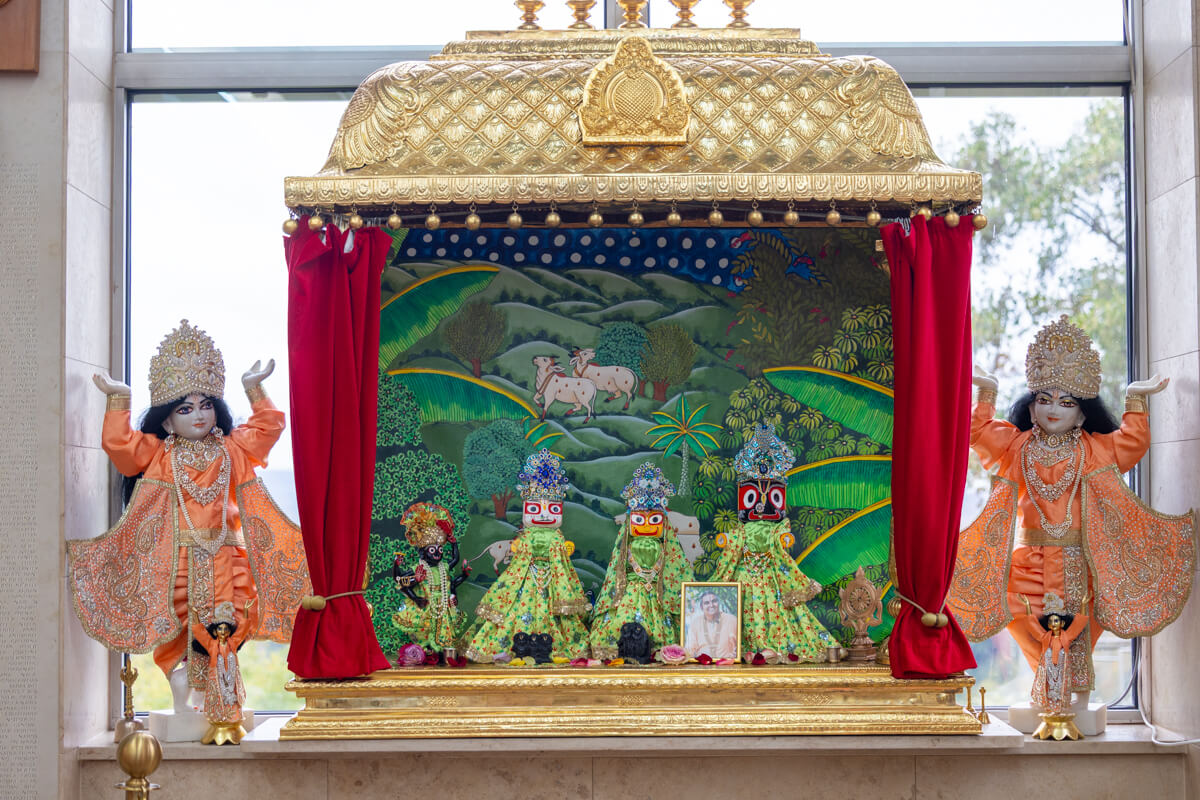
Sri Jagannatha and Gaura Nitai’s Lilas
Śrī Jagannātha, a manifestation of Śrī Kṛṣṇa Himself, embodies the all-embracing form of God who offers His love and mercy to everyone, regardless of background.
November 2025
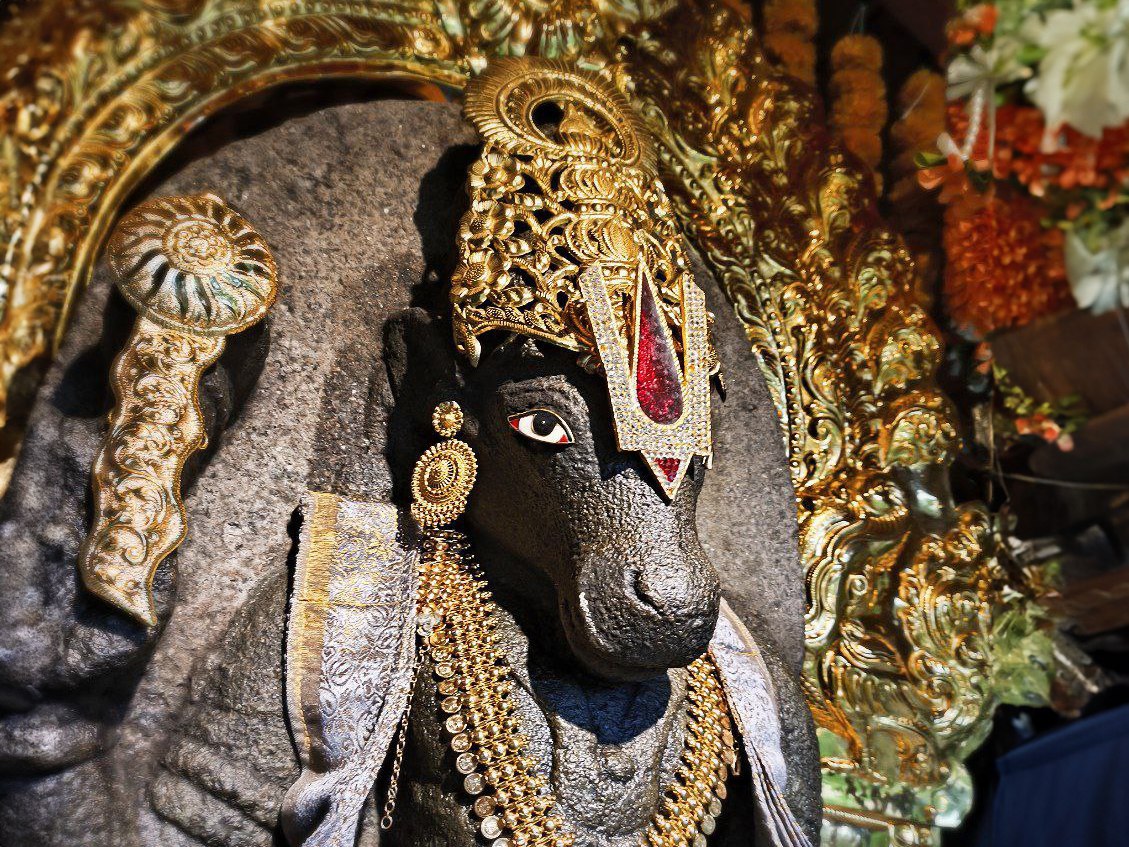
Lord Varaha`s Lilas
Lord Varāha is a boar incarnation of Bhagavān, particularly renowned for His act of saving Mother Earth from the demon Hiraṇyākṣa.
September 2025

Gayatri Devi`s Lilas
Gāyatrī-devī, a radiant aspect of the Divine Mother, is revered as the source of wisdom in Hindu tradition. As the divine origin of the Gāyatrī-mantra, She embodies purity, clarity, and higher learning.
July 2025
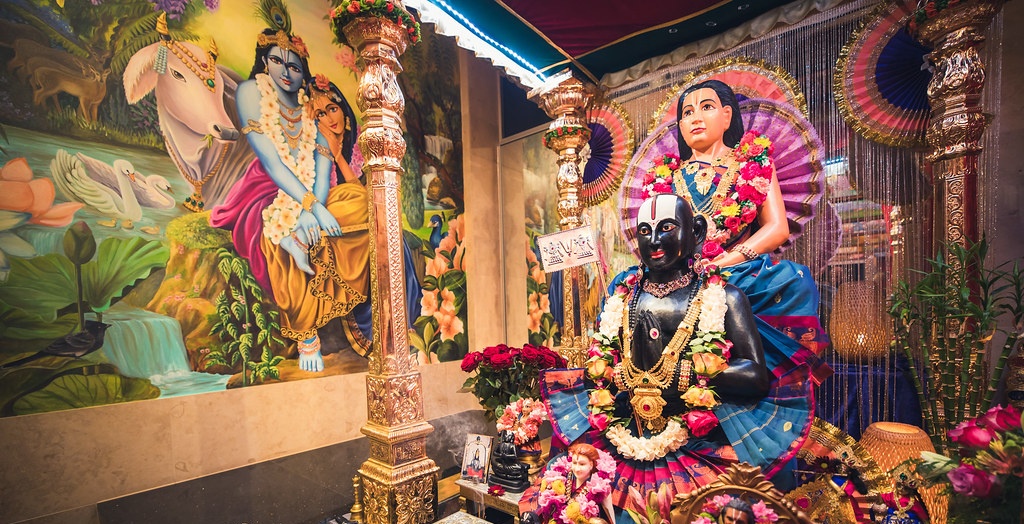
The Masters`s Lilas
At Shree Peetha Nilaya, The Masters— Śrī Rāmānujācārya, and Mahāvatāra Bābājī —are deeply cherished by devotees. Their lives of selfless service and deep devotion continue to inspire us.
May 2025
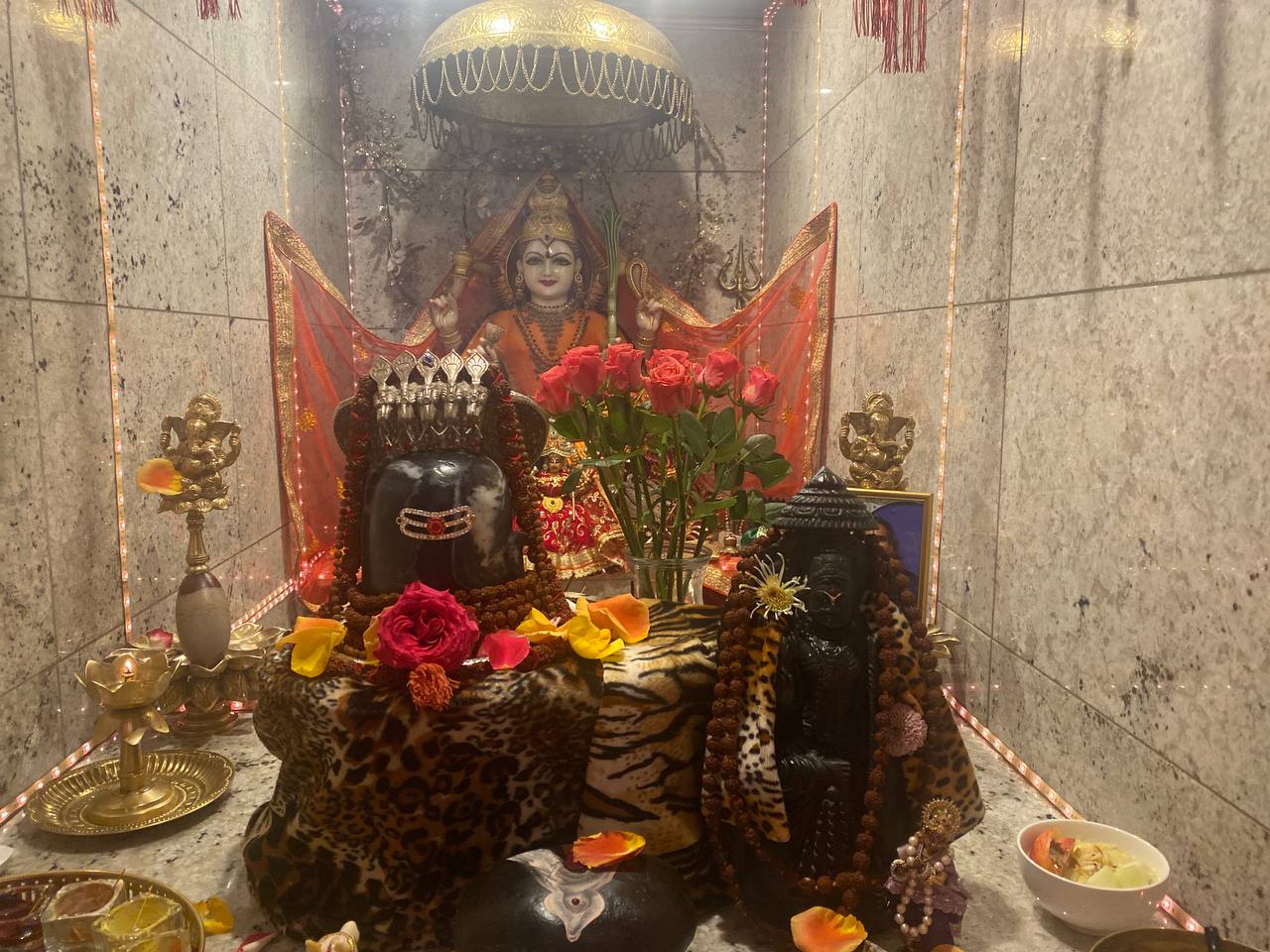
Shiva & Kamakshi Devi`s Lilas
Lord Śiva, one of the Trimūrti, embodies love, service, and devotion, holding a special place in the hearts of his devotees. His divine counterpart, Kāmākṣī-devī, a powerful form…
March 2025
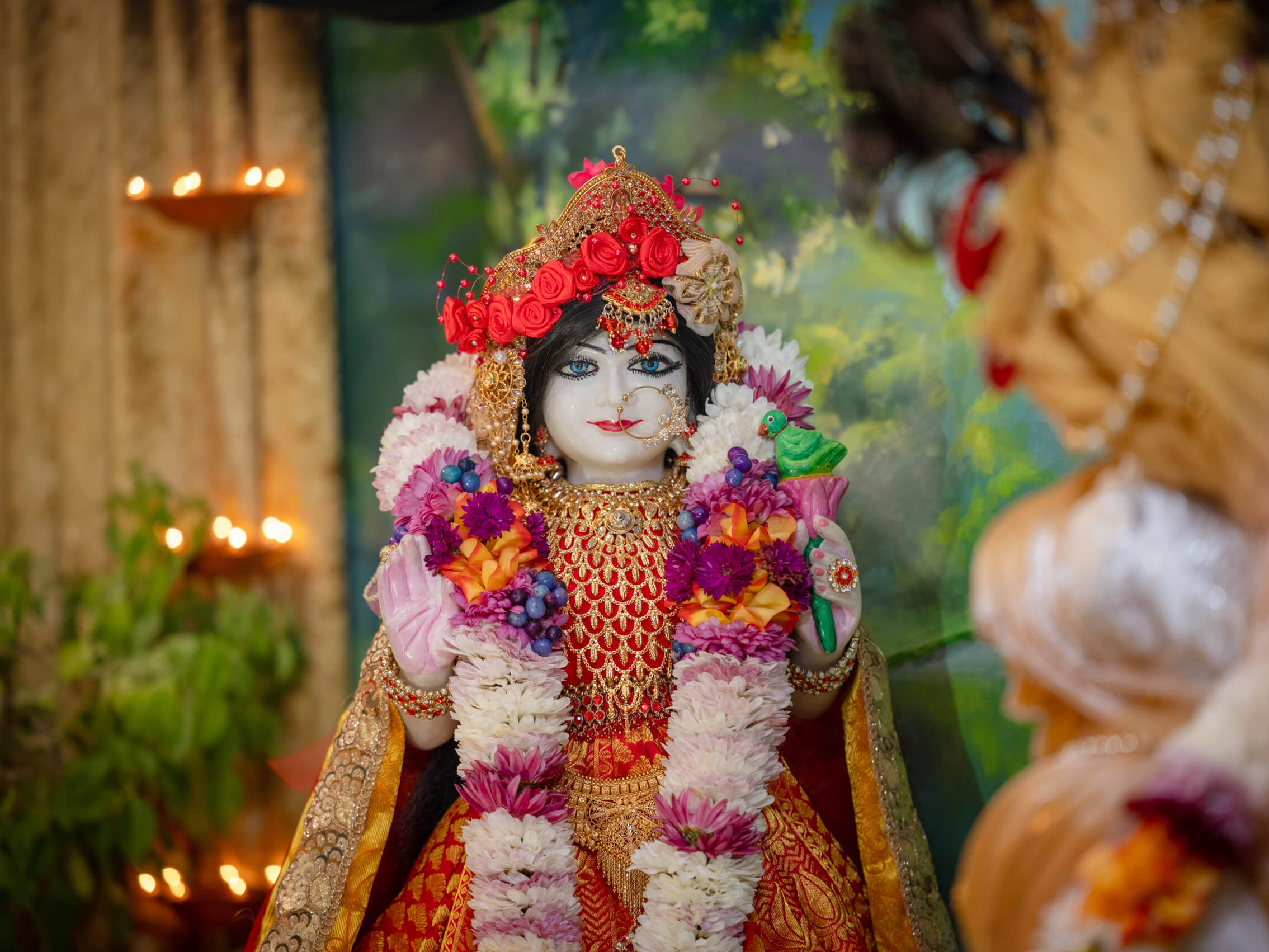
Tulsi Devi`s Lilas
Tulsī-devī is more than a plant—She is a living presence of love and devotion that touches the hearts of all who serve Her.
January 2025
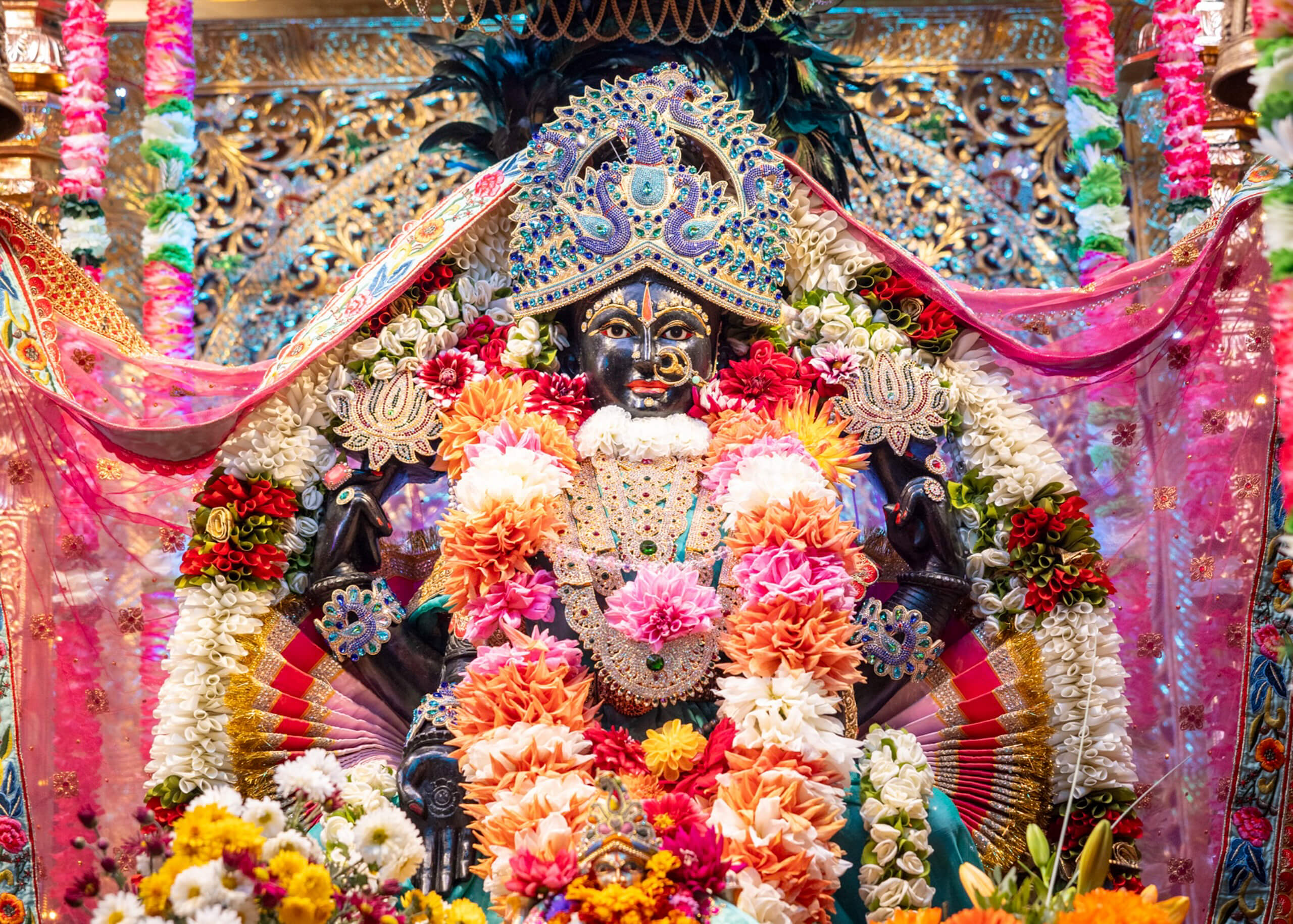
Maha Lakshmi`s Lilas
Maha-Lakshmi, the beloved wife of Lord Narayana, fills our lives with blessings, peace, and kindness.
November 2024
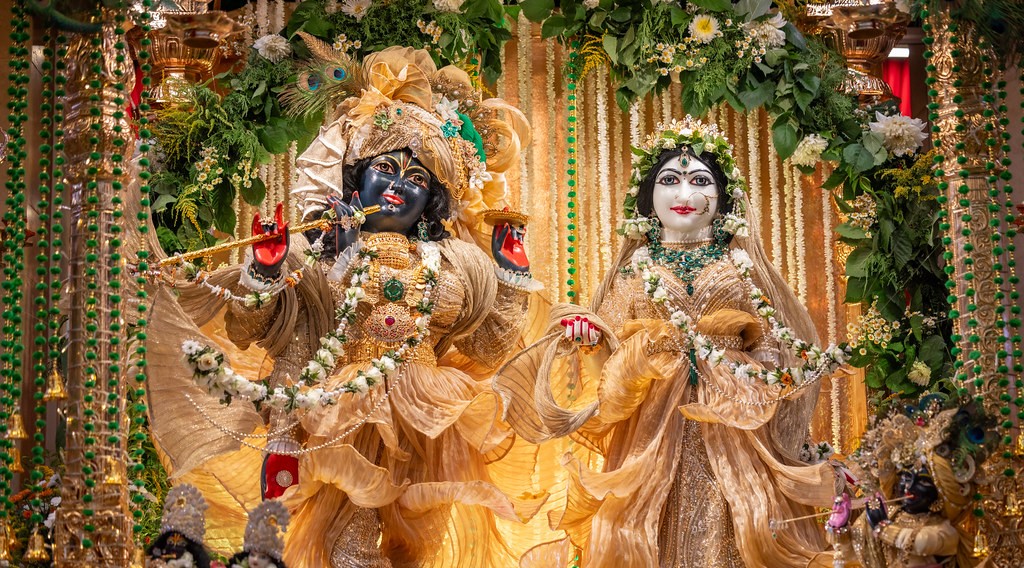
Radha Krishna`s Lilas
Radha and Krishna, residing in the Bhutabhrteshwarnath Mandir at Shree Peetha Nilaya, were lovingly named ‘Kripanidhe’ by Guruji, meaning ‘the ones who are full of mercy and grace’.
October 2024
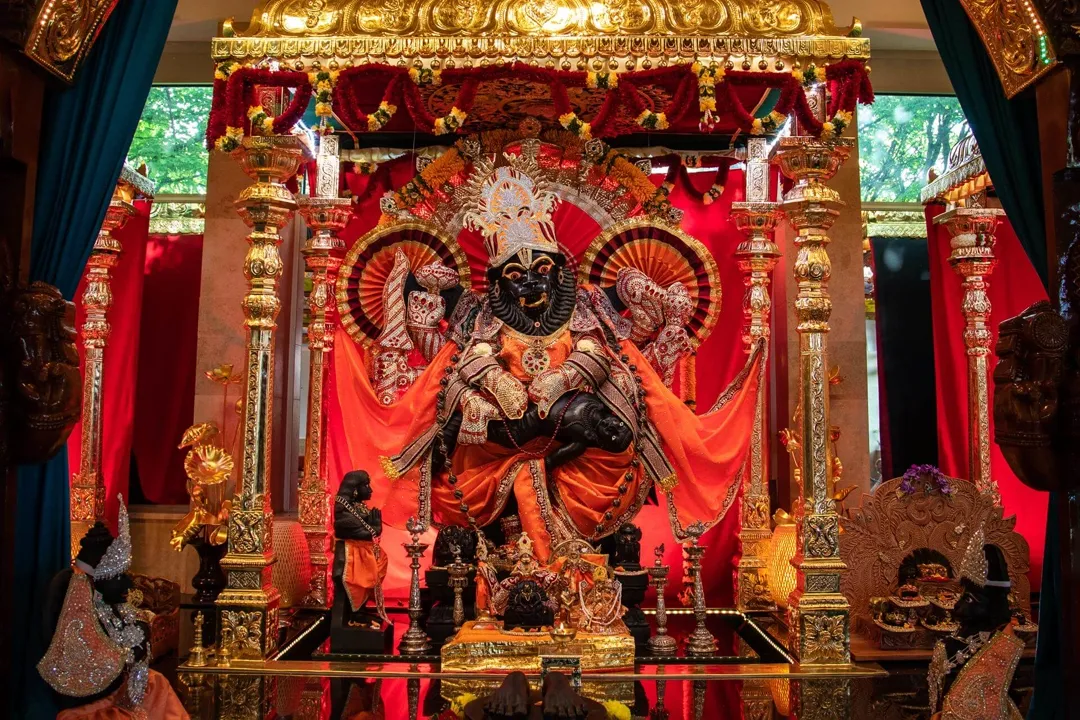
Lord Narasimha`s Lilas
At the Bhutabhrteshwarnath Mandir in Shree Peetha Nilaya, Lord Narasimha, who is both fierce and gentle, is not just respected but also truly loved by His devotees.
September 2024